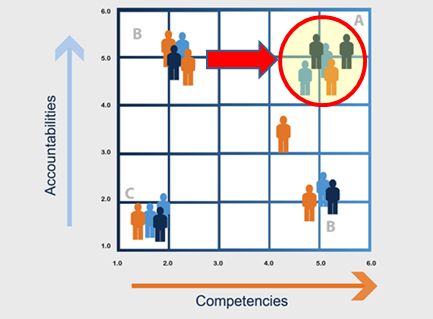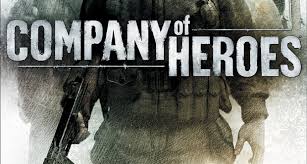Sales & Marketing Effectiveness Blog Prevent ‘A’ Player Turnover
Tags:
This post will explore why all turnover is not created equal. Measuring sales turnover as a percentage can be misleading. A lower percentage isn’t always better.  Yet turnover is probably the most measured sales metric. HR, sales leaders, and Sales o ps all measure it.Â
ps all measure it.Â
Instead of focusing on an overall turnover percentage, focus on retaining ‘A’ players.  Many sales organizations are proud that they have a low turnover metric. But they are retaining the wrong people.Â
Â
Want to retain 100% of your 'A' players? Download the Top 10 Ways to Prevent ‘A’ Player Turnover Checklist. Print it out and put it on your desk.
Â
The first step in preventing 'A' Player turnover is properly identifying 'A' Players. This is not as easy as many think. Here’s an example:
Top Territory Todd:
Todd has exceeded quota the past 5 years. His quota is approximately the same as everyone else. Yet he has 3x the average territory potential in his patch. He has some of the largest current customers. Prospects fall into his lap with little effort. His boss does not want to split his territory. Why mess with a good thing? Todd hasn’t needed to be a student of the game. He has made boatloads of cash and played golf on Friday afternoon for years. Why spend time sharpening the saw? Because of this, Todd isn’t extremely competent on relevant sales skills. Is Todd an 'A' Player? Many would think so based solely on his results. But place him in an equal territory and watch him flounder.Â
Newbie Ned:
Ned has been on your team for 9 months. He impressed everyone during the hiring process. He was diligent during onboarding. His activity is through the roof. He is teaching others of the team new skills he learned in previous roles. Yet, Ned’s results are average for his tenure group. Ned was given the smallest territory and worst customers. Why? His Sales Manager didn’t want to rock the boat. He doesn’t feel Ned knows the product or industry well enough to approach large customers. He is holding Ned back.   Ned walks into the Sales Manager’s office and resigns. The Sales Manager looks at Ned's revenue numbers and doesn’t bat an eye. Once Ned is gone, the Sales Managers labels Ned a ‘bad hire’.Â
What would have happened if Ned was given Todd’s territory? Odds are, his revenue would have skyrocketed. He possesses better hunter competencies and works much harder. In the long run Ned would have significantly out produced Todd. But the Sales Manager was focused on the next 30 days.
The Sales Manager in this scenario missed his number by 4% last year. If he gave Ned a fighting chance he would have hit the number. Backfilling Ned’s territory led to a $1.2 million year-over-year territory revenue deficit. That revenue would have bridged the gap.Â
Â
This is a common issue. So how do you solve it?
- Identify ‘A’ Players - determine your team’s level of competency. Add in performance against accountabilities and plot your team on the 'A' player matrix.
-
Assess whether your performance conditions are conducive to 'A' player success.
- Territory & Quota – do 'A' players have a fair shot to hit their number?
- Leads – are you providing them enough quality leads?
- Is your Go-to-Market Strategy relevant – dated sales channels will frustrate customers. Frustrated customers lead to frustrated A players.
- Reduce non-selling time – admin doesn’t make any sales person money. Minimize it!
- Comp – are 'A' players paid fairly for their efforts?
- Execute the 10 Sales Leadership Ideas in the tool - ‘A’ players won’t settle for an average leader. They need a boss that will remove obstacles, provide candid feedback, and challenge them. ‘A’ players want value from their boss, not noise. Nothing will lead to ‘A’ player turnover faster than poor sales leadership.

http://dealernetservicesonline.biz
 Understanding the “why buy†motivations in potential buyers can have a major influence on the methods your dealership may use to entice these buyers to buy from you and not from the dealership down the street.
Understanding the “why buy†motivations in potential buyers can have a major influence on the methods your dealership may use to entice these buyers to buy from you and not from the dealership down the street.
Recently I viewed a number of YouTube videos presented by Simon Senek, a motivational speaker, Columbia professor of communications and author of 'The Golden Circle' and 'Start with Why'.
Â
Senek speaks about how most companies normally approach the act of sales and marketing from an 'outside-in' perspective.
Â
Let’s use a dealership as an example:
•    What they do   = We sell cars
•    How they do   = We employ floor salespeople and list vehicles onlineÂ
•    Why they do    = We do the same as our competitors
Senek maintains that great companies - and he uses Apple as his example - operate in exactly the opposite way. In other words, they work from the 'inside-out' - for them the sequence of events will be:
•    What they do = In everything we do, we challenge the status quo
•    How they do  = We make our products user-friendly, cute to own and attractive
•    Why they do  = Want to buy one?
In Senek’s world, his belief is that companies should think in terms of having a goal of “doing business with people who believe what you believeâ€.
When you apply this to a normal customer/dealership relationship it is a process that may not find universal acclaim, as standard practice would be to sell potential buyers what you have - such as that well-priced, high-spec demonstrator. It would not be to sell to potential customers who believe what you believe!Â
Bear with me, as I know it also was a tad confusing before I got my head around the argument when I attempted to apply this thought process to a dealership setting. To assist the simplification of this process for a typical dealership setting I was able to draw on the work recently conducted by Cobalt’s corporate storyteller, Jade Makana, in her recent e-book entitled 'Defining Your Dealership Why'. Â
A comparative approach to dealership marketing outlined by Makana may be:
Dealer A who adopts a rational thought processes to marketing
Â
* We sell the car you want
Â
* Our cars are on sale
Â
* We offer zero percent financing
Dealer B who adopts a why buy feeling approach to marketing
Â
* Come in and enjoy a pressure free environment at XYZ Motors as our consultants are paid on salary not commissions. Why? Because we believe pressure belongs in your tyres not your car buying experience, or
Â
* Come buy a car from XYZ Motors and get free tyres for life. Why? Because we believe in lasting relationships, not drive-by sales. We want to know your name, not just your credit card number, or
Â
* Come buy a car from XYZ Motors, where $100 of every car sale goes to Child Cancer. Why? We support worthy charities in the hope that you will do the same.
These extreme examples listed above are used for illustration purposes. Dealer B gives up trying to concentrate on commodity features in favour of concentrating on a value proposition - what he believes and why he believes in it, these are his core value propositions.Â
He does not concentrate on price or models as they are not a why. For Dealer B it becomes second nature for him to strut his core beliefs and incorporate these into his everyday business. It is what Jade Makana refers to as "a dealer walking the why, will create customers for lifeâ€.
To understand why we buy with our feelings we need to look at our brain. The brain is made up of two major parts: the neocortex and the limbic brain. The neocortex or the “what†brain processes rational thought or facts. This is the logical part of the brain, but it does not drive behaviour.Â
The limbic brain or the “why†brain is where all our feelings and instincts are stored - it is the driver of behaviour. Hence, potential customers buy with their feelings.
When you think seriously about the why in marketing to potential customers it is far easier to differentiate yourself from your competitive dealers. Jade Makana demonstrates two US dealer examples as marketing case studies, they are:
Â
* Carter Subaru, based in Seattle capitalise on Subaru’s “why equity†and on the brand's core marketing message of safety and responsibility.
Â
Carter Subaru’s campaign is to plant one tree for every test drive, and to plant three trees for every vehicle purchased - and they proudly promote the fact that, to date, they have planted 70,000 trees!
* Sewell Automotive based in Dallas and headed by Carl Sewell has a simple and revolutionary 'why buy' message. “Do not charge customers for any service you would not charge a friend forâ€.
Â
Sewell dealerships have on-call service reps 24 hours a day, who are known for doing things like showing up at Dallas Airport at midnight to replace a broken key in a customer’s ignition, for free.
Â
The morale of this story in Makana’s opinion is: “Sell a car at rock bottom price and tomorrow they will leave you for the next great deal. Bail someone out of a jam in the middle of the night and you have a customer for lifeâ€. Sewell has expanded his business from 1968 revenue of $10 million to just over $1.5 billion today.
I leave for your perusal the following four dealership examples Cobalt offers as 'why buy' best practice:
Â
www.cartervw.com/AboutUs
www.findlaychevrolet.com/About_Us
www.peoriavw.com/AboutUs
www.sewell.com/web/our_values
Â
 I cut my teeth selling at an early age selling door to door. From delivering newspapers to Fuller Brush to Cash is Best, for which Ted Turner was a fugitive from the US holding offshore on his yacht in international waters for purporting a pyramid scheme, to selling the original wind up fire and burglar alarms for the home.
I cut my teeth selling at an early age selling door to door. From delivering newspapers to Fuller Brush to Cash is Best, for which Ted Turner was a fugitive from the US holding offshore on his yacht in international waters for purporting a pyramid scheme, to selling the original wind up fire and burglar alarms for the home.
After having had my foot caught in the door many times I eventually found my way into Automobile sales. I was so excited to have this opportunity because here were people coming to me looking to buy what I had to sell.
I felt like a kid is a candy store and never looked back. This business allowed me to experience owning my own businesses but I always came back to what I always loved.
When I think of all the advice available to train a good salesperson I think of why salespeople would not all be superstars. After years of being around commissioned sales and salespeople both in and out of the Automotive industry it is apparent to me that the art of selling (and it is an art) is a talent that few people ever master.
I have seen so many techniques that salespeople use to make a sale that works very well for them but would never work for me. As a matter of fact, Some I could not even fathom how they even made so many sales with their “Style†of selling but it worked for them.
What worked for them would never work for me or you.. You can only observe and take those observations and find a “Style†that works for you and make it your own.
This “Style†for the fortunate ones something that comes naturally making selling for them almost effortless. Sales must be looked at as a challenge- the more difficult the sales is to make, the more satisfaction you get from the experience.
That challenge is something that the truly gifted crave, need and look forward to each and every day in every aspect of their lives. It is like a game of chess that is played and each move determines an eventual outcome that a true salesperson is driven to win by reading each move of the opponent before it is even made.
We are all actors on a stage in our journey through this wonderful life but only a few can mold and manipulate the parts they play.
There is and always has been a misunderstanding or maybe even a lack of respect for these truly gifted people. Only a secure, talented and gifted manager who driven to hit that next level knows that he must let these salespeople work their craft using their own “style†to make the relationship rewarding and successful.
These are the type of people that one needs to make a business truly successful. The ones who are in it not just for the money but because they are driven to succeed. Don’t settle for mediocrity. Constantly be looking for the people that will take, maintain and always be looking for that next rush that only these people get from their work.
If you have all the tools and have not found your “Style†as an owner, manager or salesperson unfortunately you probably never will. But if you know all this and never stop looking to surround yourself with these truly talented people you will have your battle plan and will eventually win the war.
Author Bill Cosgrove
http://dealernetservicesonline.biz
Â
Part IV of A Business Model That’s Just Plain Bad For Business. Do you want people who are going to tell you “What You Need To Hear†or do you want people who are going to tell you want you “What You Want to Hear?†If you are the later than you might as well stop right here because I am not here to stroke your ego, I’m here to make you money and make you proud of your business and of what your accomplishing.
Do you want people who are going to tell you “What You Need To Hear†or do you want people who are going to tell you want you “What You Want to Hear?†If you are the later than you might as well stop right here because I am not here to stroke your ego, I’m here to make you money and make you proud of your business and of what your accomplishing.
Have you heard the expression that you need to “Spend Money to Make Money?†Have you heard the expression that you need to “Save Money to Make Money?†Let’s Get Real!
Bottom Line Growth is not sustainable only Top Line Growth is and only Top Line Growth will get you the results that will take you where you want to go with the rewards and pride that come with it. (Tell your bean counting consultants to put that in their pipe and smoke it.)
So how can you think or where did you get the idea that you will get the best Marketing, Sales, Service or Parts minds on the cheap? These people who are on the front lines day after day “Are you Business†and are the one who are going to make or break it.
Saving Money is all well and good but Making Money means that you are doing the right things to be successful and to be successful you need to have the kind of people that can get the results and this means you need to “Pay for Performance.â€Â If you want to save money save it on office supplies, Press your vendors for discounts, change your electric company but don’t think that a gift certificate for dinner or a pat on the back is going to recruit or retain the talent you need to be successful.
Let me ask you a question. Were you born a business owner or did you have to pay your dues and earn what you have today? Did you seek out the companies that thought people with your experience and talent were a dime a dozen and didn’t want to pay what you were worth? I think not.
I stayed at the last Dealership I worked at because they knew the value of people from Management to salespeople to every worker there and paid accordingly. I and my co-workers made more money than we could at any other place and the Dealership made even more and were consistently in the top tier of highest average front and back end grosses- A business that PROVES this all out. How can this be? It is a direct result of sharing and respecting the people who make it happen for you. It means making an investment that unlike the stock market is guaranteed to pay off. There is no complex formula here to figure out.
 Do you want to attract Independent thinking people who can create value for your business? Then you need symbiotic relationships. Or do you want parasitic people who are going to attach themselves to you on the cheap because they have few or no other options?
If you are the former, send me an e-mail at billcosgrove@dealernetservicesonline.biz and I will send you a commission plan that will attract and retain the talented people you need and should want if you want to be successful and stand above the rest.
By Bill Cosgrove
Pesident
DealerNet Services
50 quirky car facts that will blow your mind [infographic]
Tags:When you take a trip back into the history of the automotive world, there’s a lot of strange and wonderful things to look at. Like, the height of the worlds lowest street-legal car, or, how much a hood ornament on a Rolls-Royce costs, or even a couple flame-throwing BMW‘s. All weird and wonderful things to behold.
Take a look at these 50 quirky car facts that the folks over at Carloan4U put together:
Â
CALENDAR
CATEGORIES
TAGS
TWITTER POSTS
CALENDAR
- powered by
- One Big Broadcast
- creative by
- WebStager
© 2024 One Big Broadcast | All rights reserved
